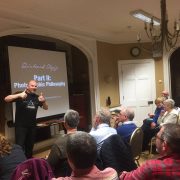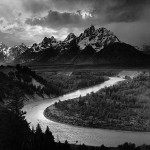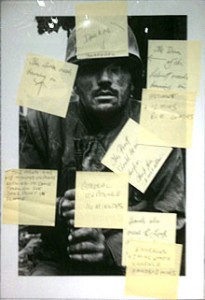What makes a ‘Pro’ ?
/in ArticlesAhh, a different type of client woe for a change this morning..
This one serves as a warning to those budding photographers who think that because they’ve bought an SLR and a ‘JoeBloggsPhotography.com’ domain name they can call themselves a professional..
One of my former students is having some grief from a client who’s asking for images in certain formats etc. and it seems they have crossed wires about what had been expected/agreed upon/delivered. The client is now demanding a full set of raw files of every image from multiple shoots etc. in return for a fee that wouldn’t hire a pro much past breakfast. Naturally said former student is in quite a tiz about it all!
Putting it bluntly folks, if you don’t know the difference between dpi & resolution, or between a raw file and a jpeg, you’re in no position to be taking on paying clients!
As a professional, your client is paying you for your knowledge and experience. You’re rightly expected to know your craft and to deliver the goods to a high standard, on time and as to do so as seamlessly as possible. It’s down to you to understand the requirements, and to clarify anything well in advance before you take on the job.
If you subsequently find yourself well out of your depth and having to ask someone else how to do what you’re being paid for, it seems the wrong person is getting paid, eh?
Copyright in Photography
/in Articles, Photography(Article original published on PurplePort. Reproduced with permission from Andy Lewis Photography)
In this article I will try to cover the basics of copyright and common misconceptions. This is not meant to be the definitive answer to all situations. Copyright law in some cases can be a very complex. If you feel any part of this article is factually incorrect the please contact me directly.
What is Copyright?
Copyright is a legal concept which exists to allow the original creator of a piece of work to be allowed exclusive rights to the piece of work. This piece of work can be a Photograph, a motion picture, a piece of music, a poem, choreography, sound recordings, computer software, graphic design and so on. For the purpose of this article I will be referring to copyrights relating to photography.
When does copyright exist?
Copyright exists as soon as the photograph is taken regardless of it being on film or digitally.
Who owns the copyright?
Copyright is held by right by the photographer who creates the image. In the case where the photographer is an employee then the copyright goes to the employer unless some other agreement is in place. In photography the copyright is held by the photographer who takes the image. Any parties involved in creating the shot, set designers, clothing designers, make up artists etc. and any models who appear in the photograph have no rights whatsoever to the copyright.
How long does copyright last?
Copyright in a photograph usually lasts 70 years from the end of the year in which the photographer dies. This is not automatic as the copyright holder may have left the copyright in his/her will.
Can the copyright be transferred?
The copyright or part of it can be transferred or reassigned to another party freely or for compensation.
For example a photographer taking an image but does not have the ability to mass produce the image, and the means to market and sell the image, may transfer copyright of the image to a company that specialises in that area. The photographer negotiates their own compensation, i.e. a one off payment. Copyright is then transferred with the photographer having no further rights to the image.
In the same situation the photographer may not wish to transfer the copyright but may wish to assign license instead. This gives the company rights to mass produce and sell the image in the same manner. In this situation the company are probably going to negotiate a better deal for themselves. They may not give an upfront payment, they may offer a lower percentage per sale or they may simply refuse the offer as being the copyright owner you are able grant other companies use of the image thus lessening its value to them. It is up to the photographer and the company to decide the terms and conditions of the deal.
The photographer could retain copyright and grant exclusive license to the company, allowing them to mass produce and sell the image in the knowledge that they have exclusive rights to do so. The photographer would usually in this case negotiate a payment for each image sold. The photographer would retain the copyright but would not be able to make the image available to anyone else.
The copyright owner may also state that any works is royalty free granting anyone free use of the image
Copyright infringement
There are many ways in which you can infringe upon copyright some of which are more obvious than others. If you see an image posted on any part of the world wide web you must assume that it is copyrighted unless it is specifically marked as not copyrighted or royalty free. Examples of copyright infringement include but not exclusive to
- Altering the image or part of the image in any way
- Passing the image off as your own work
- Printing a copyrighted image and selling it on
- Cropping the image
- Pasting the image into part of a larger image
- Taking a photograph of a photograph to recreate it.
Common copyright infringements
This list is not exhaustive and is only representational of the usual infringements found on a website such as this.
- Taking an image from a photographers portfolio and using it on your own portfolio or other website without their consent.
- Editing an image given to you by a photographer.
- Cropping any image given to you by a photographer.
- Removing or attempting to remove or cover a watermark on any image.
- Allowing an image you have been given to be used for commercial gain.
- Selling or permitting use for publication any image given to you by a photographer without their consent.
Common misconceptions
My tutor said he/she owns the copyright to an image I took while under instruction is this true?
Unless it clearly states this in the terms and conditions of the training course then the answer is no. The tutor may set the shot up, arrange the lighting, meter the shot, tell you what camera settings to use and so on but if you press the shutter, you own the copyright.
I worked on a tf with the photographer so I have equal rights to the image
Wrong. The photographer owns the full copyright to the image. He/she may grant you permission to use the image for your portfolio or in any other way agreed. You may not sell or allow the image to be used for any other purpose without the express consent of the photographer.
The photographer tagged me in the image so I copied it from his portfolio
Wrong, unless the photographer granted you usage rights to the image you may not use the image on your portfolio or anywhere else. In the case of a TF shoot you will have or should have been given usage rights to a specified number of images from that shoot, if you subsequently see another image from that shoot it does not give you any rights to use it without permission.
The photographer did not deliver the images from our tf shoot so I took them from his/her portfolio
No you have no rights to take them from the photographers portfolio. This scenario should never really happen but in the unfortunate event it did you did not receive the images you must contact the photographer for the images. If the agreed number of images do not get sent to you, please report this to admin.
I did not like the shots the photographer gave me so I had them re-edited
Any editing, cropping or altering of an image may only be done with permission of the photographer. Altering any images given to you without permission is not only bad manners and likely to cause upset, it is also in breach of copyright.
What should I do if I see my image being used wrongly?
If you find your image being used in breach of your copy right you can choose to ignore it and leave it be or you can choose to persue it. If you choose to persue it you should take a screen shot of the website hosting the image and a note of the website address itself. In the event of it being in a newspaper or other publication, keep a copy of it. You should then contact the person who you feel has breached the copyright. In the event of a website you can usually contact them in their contact section or find the registered owner of the domain name from http://whois.net/. You can either send them an invoice for the usage of the image and or request they remove it. To get a guide to how much your invoice should be for you can find some information on http://www.nuj.org.uk/home/
Mono Conversions
/in Articles, Images, Photography, Tips & TechniquesThe example below show how much more effective a simple image can be with a monochrome conversion.
Hopefully by the wonders of modern science you should be able to move your mouse over the image below (grab and drag the little handle) and see a before/after example of the original image with nothing done to it (other than a slight crop), and then the ‘after’ image with a little TLC applied. What’s been done? Actually on this one not that much.
- Cloned out the plastic bag
- Converted to mono
- Localised exposure adjustments to bring up some shadow detail
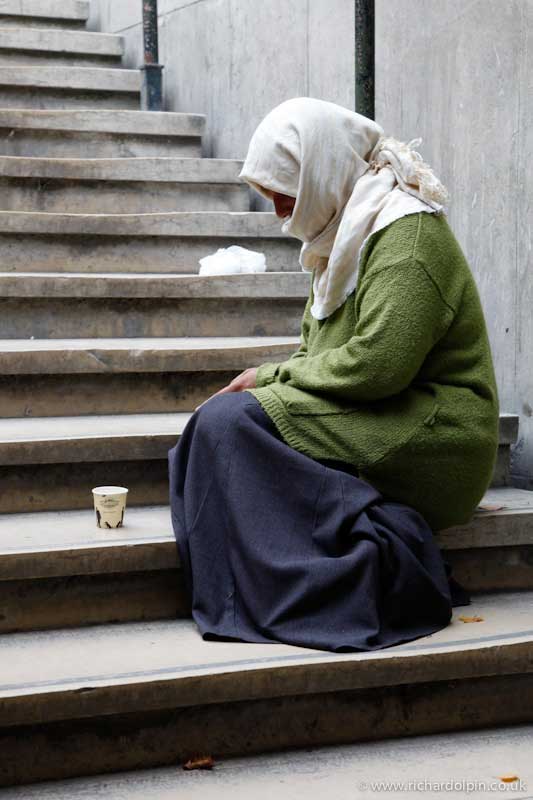
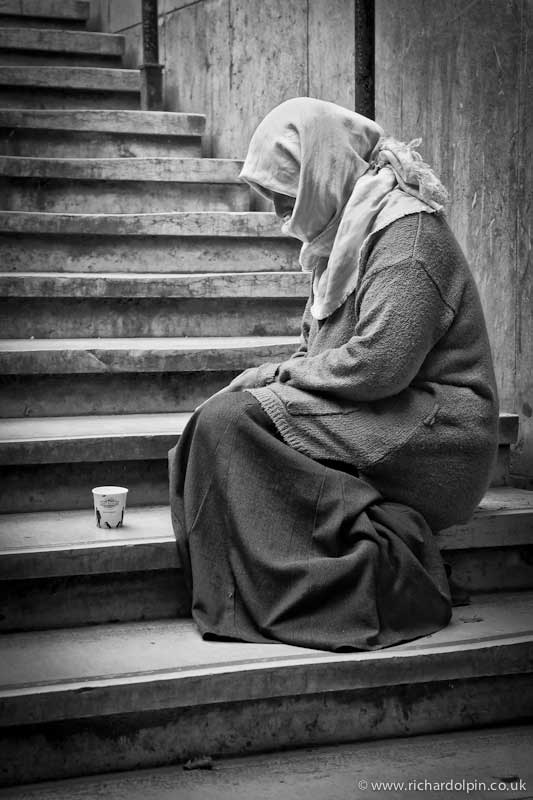
Move the slider to the left to reveal the ‘before’ image..
Copyright – a reminder…
/in Articles, Photography, ServicesRecently I’ve had to remind a couple of people about the way copyright works.
It’s all too easy these days to post an image on Facebook or a blog that you found somewhere, but it’s important to remember you need permission from the person that owns that image to do so..
It doesn’t matter if you’re in the picture, and yes that includes if you’re a model on a photoshoot (paid or TF makes no difference), the copyright belongs to the photographer.
You can’t ignore this stuff, it’s important!
Here’s an interested blog article about the issue: http://www.blogher.com/bloggers-beware-you-can-get-sued-using-photos-your-blog-my-story
You should probably read this too: UK copyright Law Fact Sheet
An extract from the UK Copyright Service website:
“Fact sheet P-16: Photography and copyright
Who owns the copyright on photographs?
Under law, it is the photographer who will own copyright on any photos he/she has taken, with the following exceptions:
- If the photographer is an employee of the company the photos are taken for, or is an employee of a company instructed to take the photos, the photographer will be acting on behalf of his/her employer, and the company the photographer works for will own the copyright.
- If there is an agreement that assigns copyright to another party.
In all other cases, the photographer will retain the copyright, if the photographer has been paid for his work, the payment will be for the photographer’s time and typically an allocated number of prints. The copyright to the photos will remain with the photographer, and therefore any reproduction without permission would be an infringement of copyright.”
As you can see, that’s really quite clear. In all cases, the photographer, or photographic company own the copyright. It doesn’t matter who’s in the image, the person who took the photo owns the rights unless there is a signed agreement to transfer the copyright.
Attribution
It is the photographer’s right to be credited as the author of the photograph, and you should always do this unless they specifically tell you otherwise.
If images have a watermark or logo on, this MUST be left intact. To remove or mis-attribute a photographer’s copyright is a very serious issue, and will be treated as such. For example, I caught a national newspaper using my images without permission once, and it cost them a LOT of money.
To give you an idea how serious this is, for a small image used on a website you could easily end up paying in excess of £1000 per image in penalties. I know this as I sent the bill to the newspaper and they had to pay it.
One UK photographer was awarded more than £5,000 in damages for the use of a single image, and there are cases documented online where photographers have received tens of thousands in compensation (example). In one famous case a photographer was awarded $1.2 million when a company used photos they had posted on Twitter!
Here’s my page with my licensing / copyright information, I have asserted my rights to be identified as the author of all my photographs, I expect to be properly credited where any photograph is used, and I expect anyone I work with to read this page!
Useful Links:
Never leave home without it..
/in Articles, TrainingHere’s another before/after example illustrating the benefit of using a circular polariser:
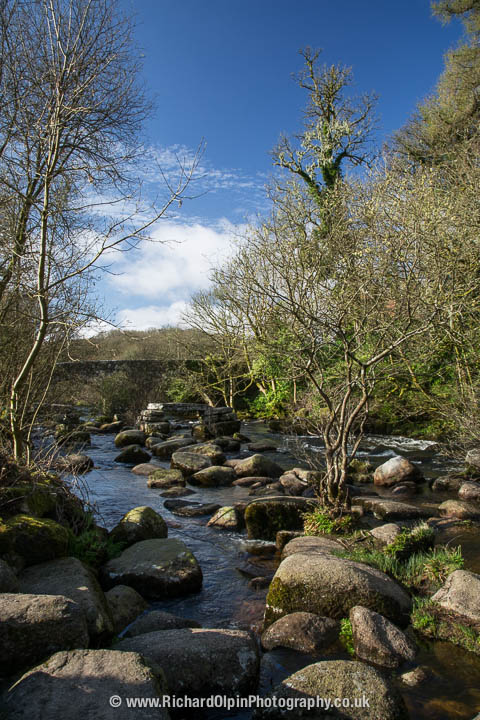
Move the slider to the right to reveal the ‘after’ image with the polariser..
Note, other than the crop and adding the copyright text, these images are both straight out of camera. The only difference between the two was the use of the polariser.
If you’re looking to buy a polariser, in my opinion you can’t beat the ones made by B+W. I use their top-end ‘Kaesmann’ filter, which isn’t cheap but it really is the Rolls Royce of polarisers. Here are a couple of recommendations for you, with Amazon Links:
Hoya Pro-1 (minimum spec I’d recommend for beginners)
Hoya HD Digital Circular Polarizing Filter (better)
B + W Circular Polarizer Filter With Multi Resistant Coating (pro-spec)
B+W Kaesemann (The best imho!)
Why you should use a Circular Polariser
/in Articles, Gear, RecommendationsHere’s another before/after example illustrating the obvious benefits of using a circular polariser in Landscape Photography..
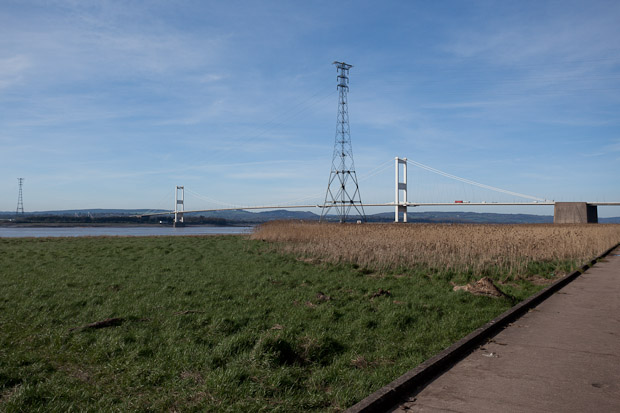
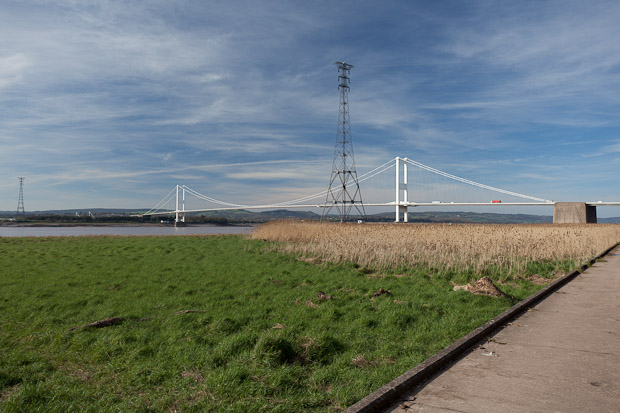
Move the slider to the left to reveal the ‘before’ image..
If you’re looking to buy a polariser, in my opinion you can’t beat the ones made by B+W. I use their top-end ‘Kaesmann’ filter, which isn’t cheap but it really is the Rolls Royce of polarisers.
Here are a couple of recommendations for you, with Amazon Links:
- Hoya Pro-1 (minimum spec I’d recommend for beginners)
- Hoya HD Digital Circular Polarizing Filter (better)
- B + W Circular Polarizer Filter With Multi Resistant Coating (pro-spec)
- B+W Kaesemann (The best imho!)
Thoughts on image processing…
/in ArticlesI thought I’d write a little about my own views on Photography, in particular my thoughts on how the process has evolved over the years from the earliest experiments of William Fox Talbot to the latest digital darkroom techniques.
Photographic Purists.. I’m not one of those!
Many people I speak to seem to be quite vehement in their defence of the purity of the traditional photographic process. They believe that you have to capture everything perfectly in-camera and that you should only print exactly what you took and that any form of post-processing is somehow ‘wrong’. Whilst I respect their personal preference I certainly don’t share it.
Firstly, there is a huge difference between what we see, and what the camera captures. The perceived image to us is a combination of the light landing on our retina and our perception of the world around us. The human mind is amazing at filling in the details from it’s experience. What the camera captures is pure physics.
Often, to make a captured image replicate what we see with our own eyes we need to do some additional processing on the image. A camera sensor, no matter how advanced, simply doesn’t have the dynamic range to represent the full detail in a scene as we see it. There is always a compromise which results in a loss of detail somewhere. By the application of processing areas
Lets consider a couple of real photographic pioneers:
The great American Landscape photographer Ansell Adams not only had an incredible eye for composition, he was also a master of creative exposure and the inventor of the zone system which formed the basis of many modern auto-exposure systems.
He would use creative masking, dodging and burning to enhance the drama in his shots often creating incredible detail with a very high dynamic range. (Click the image for a larger view).
Don McCullin FRPS CBE is a renowned war photographer who has taken some truly iconic images over the years, but even in the sixties he was still using creative darkroom techniques to get the best results:
Take a look at the image on the right here which has been reproduced countless times over the years. The yellow sticky notes are his instructions for processing the image showing exactly how long each area needs to be exposed for best results.
In a traditional darkroom this would require multiple exposures and masking out areas which need to be brighter in the final print. This is exactly the same concept as using an adjustment brush in Photoshop today
So, how is that relevant?
Well my point is simple. Processing has always been a part of truly creative photography though I suspect many people simply didn’t realise how much work had gone into some of those iconic images over the years.
People have been processing photographs for as long as they’ve been taking them, it’s only the methods that have advanced from a purely mechanical/chemical process into the digital domain.
[hr]
Children of the revolution
I consider myself very lucky to have been born when I was.
As a very young child I grew up in a pretty conventional family, the only bit of technology we had was a television. We did have a battery powered portable which we used to take caravanning, it was a push button black and white set with a terrible reception. Oh, and yes, you had to get up and walk over the lounge to change the channel, which didn’t happen that often as there were only three of them! We still played ‘records’ and ‘tapes’ but if you missed your favourite TV programme it was tough luck as you couldn’t record the telly on super-8 film!
I grew up at exactly the right time that technology has always been a natural part of my life. I got to experience the start of the technology boom, from the Walkman, home video recorders, CD players etc. I got my first computer when I was just 13 (a sinclair ZX-81) and worked my way through the 8-bit machines of the late 80’s, built my first PC in the early 90s and finally switched to the Mac about five years ago. it’s crazy to think that my mobile phone now has vastly more power than my first PC..
And so, for me the technology is a natural part of who I am, and I simply cannot see any reason why I wouldn’t want to use it.
Photography is an art, and I believe every artist has the right to choose their form. To me that means the whole process from capture, through to a finished image. If the viewer enjoys the final image then why should they even care how it was created? Personally I see nothing wrong with any amount of processing or digital manipulation and indeed, I’m thankful that I’ve grown up at a time when I can take full advantage of the amazing creative scope of the digital darkroom.
If you’re interested to learn more about my digital workflow then watch this space as I’ll be posting a page to discribe some of that process very soon.
My Other Sites
Latest News
 Back to it!May 2, 2022 - 12:49
Back to it!May 2, 2022 - 12:49- Lockdown loopy!July 11, 2020 - 12:27
- A busy year presenting..November 11, 2019 - 13:13


